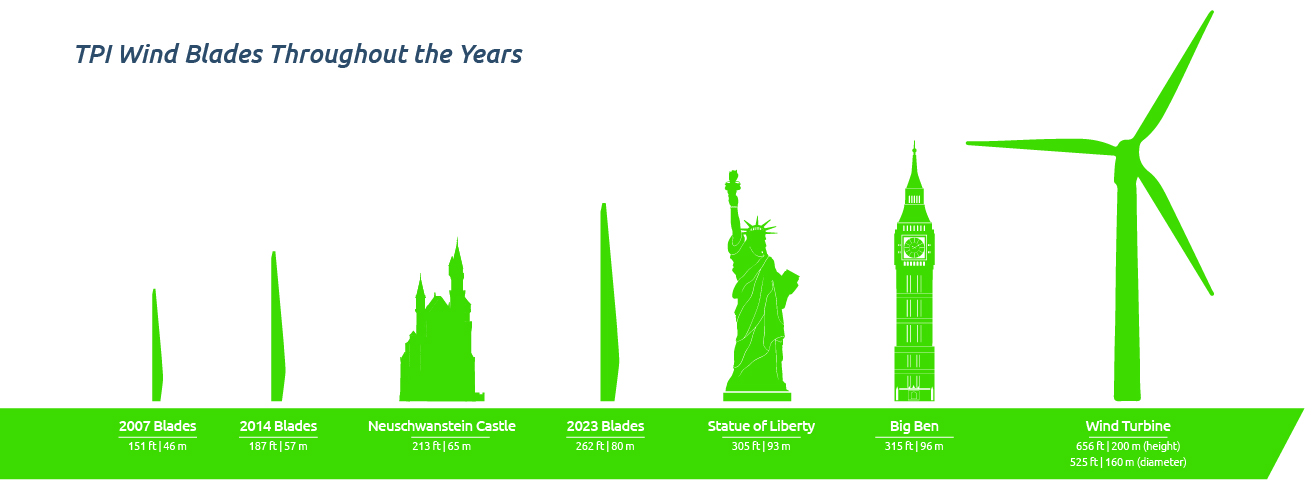Wind energy is expected to make up over 30% of electricity generation in 2050 with close to 8,000 gigawatts (GW) installed compared to approximately 900 GW in 2022.4 This over eight times increase in installations is a significant opportunity for the wind industry and TPI. Wind power, among other renewable energy sources, is now considered one of the most cost-effective methods for generating electricity in a majority of countries worldwide.5
Governments continue to ramp up action on climate change, driving a surge in renewable energy adoption and emission reduction efforts. The landmark COP28 summit in Dubai saw over 200 countries reaffirm their commitment to the 1.5-degree target of the Paris Agreement, solidifying the global shift away from fossil fuels.
In the U.S., the Inflation Reduction Act (IRA) of 2022 allocated a historic $391 billion for clean energy and climate initiatives over the next decade. As the IRA is in its final stages of clarification and implementation, its impact is already being felt with tangible investment decisions underway across the industry. The extension of the Production Tax Credit and support for U.S.-based wind energy manufacturing through the Advanced Manufacturing Production Tax Credit are key drivers of this growth. TPI and its customers are proactively preparing for the expected surge in wind installations through the introduction of new turbine models that prioritize standardization and efficiency. This strategic approach aims to meet the projected demand of almost 15 GW per year for onshore wind by 2025.6
The long-term commitment included in the IRA provides crucial policy certainty for the U.S. market, paving the way for sustained growth in wind energy throughout the coming decade and beyond. This unwavering focus on renewables is not only essential for mitigating climate change but also presents exciting opportunities for economic development and job creation in the clean energy sector. Building on the momentum of REPowerEU, wind energy continues its ascent as a cornerstone of Europe’s energy independence and climate ambitions. The 2023 European Wind Power Package aims to accelerate permitting and build a robust domestic manufacturing supply chain, paving the way for exceeding the revised target of 425 GW installed capacity by 2030, doubling today’s figure.7 Notably, 2021 also saw India pledging to reach 500 GW of renewable energy capacity by 2030 and carbon neutrality by 2070, demonstrating the global urgency and increasing feasibility of a renewable energy future. These developments showcase wind energy’s crucial role in driving not only climate action but also energy security, economic growth, and resilient communities.
This year, the industry dealt with quality challenges in a number of areas, caused by the recent rapid pace of new product introductions among other drivers. TPI has reiterated its commitment to quality, working with our customers to improve processes, designs, and product standardization. This will serve as a strong foundation for the expected growth this decade. TPI continues to adapt to the evolving market and we align to our customers’ long-term strategies, support new product introductions, develop and operate the most competitive manufacturing footprint for the markets we serve, and provide commercial solutions to deliver the most competitive total delivered cost. Our business model is focused on ensuring TPI remains the preferred supplier to our customers as the demand for wind energy grows.
4 International Energy Agency World Energy Outlook (2023)
5 International Energy Agency Renewables (2023)
6 Wood Mackenzie Global Wind Power Outlook (2023)
7 WindEurope Wind Energy In Europe (2024)

